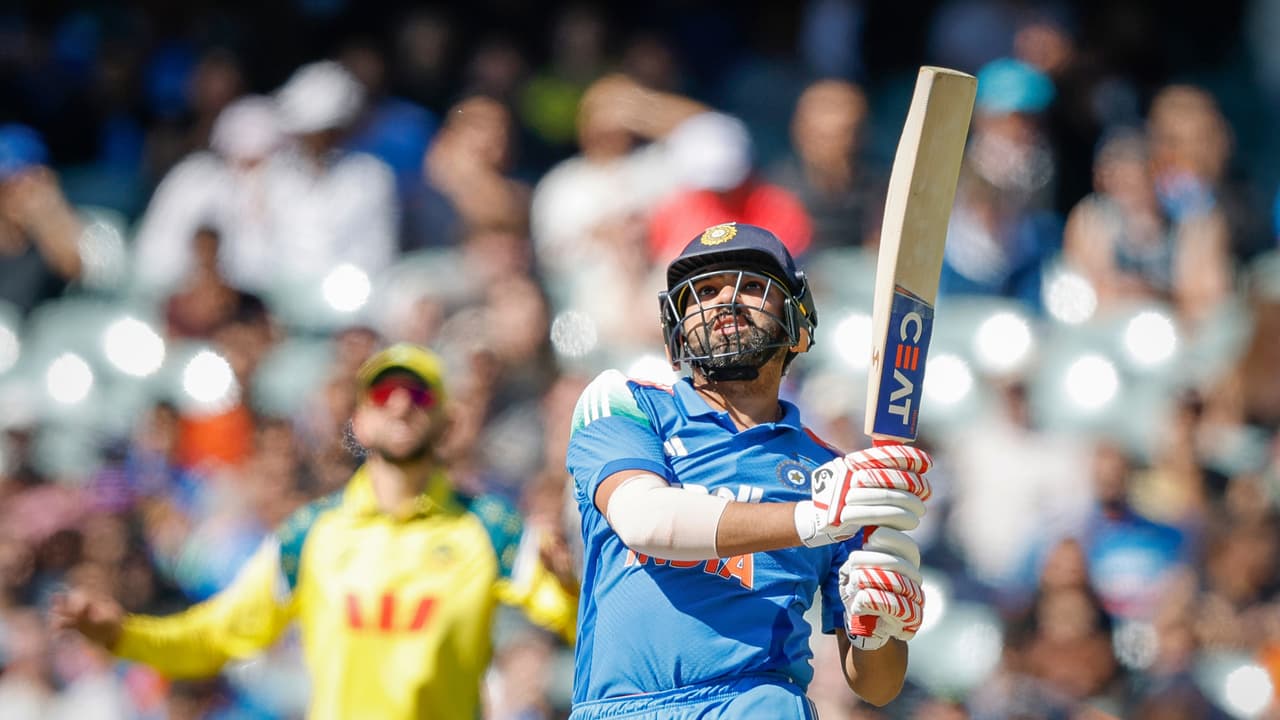Despite Rohit Sharma’s valiant 73, India fell short and lost the second ODI to Australia by two wickets on Thursday, conceding the three-match series and reigniting debates over the exclusion of proven match-winner Kuldeep Yadav.
It was a night of grit, grace, and heartbreak at the Adelaide Oval as Rohit Sharma once again reminded the cricketing world of his fighting spirit. Yet, despite his defiant 73, India surrendered the three-match ODI series to Australia after losing the second game by two wickets on Thursday. The loss sealed Australia’s 2-0 lead in the series, leaving India with an uphill battle and reigniting debates over the exclusion of proven match-winner Kuldeep Yadav.
Despite India posting a fighting total of 264 for 9, the visitors fell short on a pitch that demanded both skill and patience. With the series already lost, the third ODI in Canberra on October 25 will be largely inconsequential.
India’s Batting Fight: Rohit Sharma Leads the Charge
Under pressure, Rohit Sharma displayed a mix of grit and class, crafting a 97-ball knock that anchored India’s innings. Coming together with Shreyas Iyer, Rohit stitched a crucial 118-run partnership for the third wicket after the early departures of Shubman Gill (9) and Virat Kohli (0).
The first phase of Rohit’s innings was all about survival. Facing Josh Hazlewood, he endured 17 consecutive dot balls, negotiating lateral movement and moisture on the Adelaide track. The veteran played cautiously, keeping the bat close to his body and leaving deliveries outside the off-stump, flicking only a single boundary off Mitchell Starc.
Once settled, Rohit’s vintage style shone through. Back-to-back pick-up pulls off Mitchell Owen’s medium pacers yielded 17 runs in a single over, and with Iyer rotating the strike, India began building momentum. Axar Patel (44 off 41 balls) provided the late impetus alongside Washington Sundar (12) to take India past the 260-run mark, while Harshit Rana (24*) and Arshdeep Singh (13) added 37 for the ninth wicket.
While Rohit showed the fire still burning within him, Kohli struggled again, registering consecutive ducks. Caught plumb in front by Xavier Bartlett, Kohli’s frustration was evident as he left the Adelaide Oval acknowledging the fans. For Rohit, however, there was a message: the 2027 World Cup may be years away, but he still has the ability to grind and guide the team under pressure.
Australia’s Chase: Connolly and Owen Steal the Show
In reply, Australia initially struggled against India’s spin attack, with Axar Patel and Washington Sundar giving glimpses of control. Sundar bowled with precision, dismissing Alex Carey (9) who attempted an aggressive sweep. Patel’s disciplined line slowed the scoring rate and removed Matt Renshaw (30).
However, the introduction of Mitchell Owen changed the complexion of the game. Owen, alongside Cooper Connolly (61* off 53 balls), flayed the Indian attack with brutal efficiency. The duo added 59 runs in just 6.3 overs, guiding Australia to victory in 46.2 overs and ending a three-series losing streak in the format. Connolly’s composure in a pressure scenario drew comparisons with Michael Bevan, reminding fans of his finishing flair.
Takeawyas and the Kuldeep Dilemma
- The Value of Specialist Spinners: The performance also highlighted the challenges India could face in the future if over-reliance on multi-skilled players continues. Nitish Reddy, deployed as a makeshift all-rounder in place of Kuldeep Yadav, managed only 8 off 10 balls with the bat and conceded 24 runs in three overs. The absence of a genuine match-winner in the spin department was felt most acutely in the death overs.
- World Cup Preparation: The performance highlighted potential issues for the 2027 World Cup if India continues prioritizing multi-skilled players over genuine match-winners in crunch moments.
- Rohit’s Resilience: The veteran proved that even under challenging conditions, experience and patience can anchor an innings, hinting at career-extending ability ahead of the next World Cup.
- Kohli’s Form: Consecutive ducks suggest that the intensity which has defined Kohli’s career may be waning, emphasizing the need for technical and mental recalibration.
While Rohit Sharma’s determined knock provided a glimpse of India’s fighting spirit, it ultimately could not overcome Australia’s composed finish. The series loss, coupled with Kohli’s ongoing struggles and the absence of Kuldeep Yadav, provides valuable lessons as India begins charting a path for the 2027 World Cup. For now, Australia’s young stars have the bragging rights, while India must reassess its strategy to ensure veteran brilliance and team balance combine to produce results in future high-stakes encounters.
